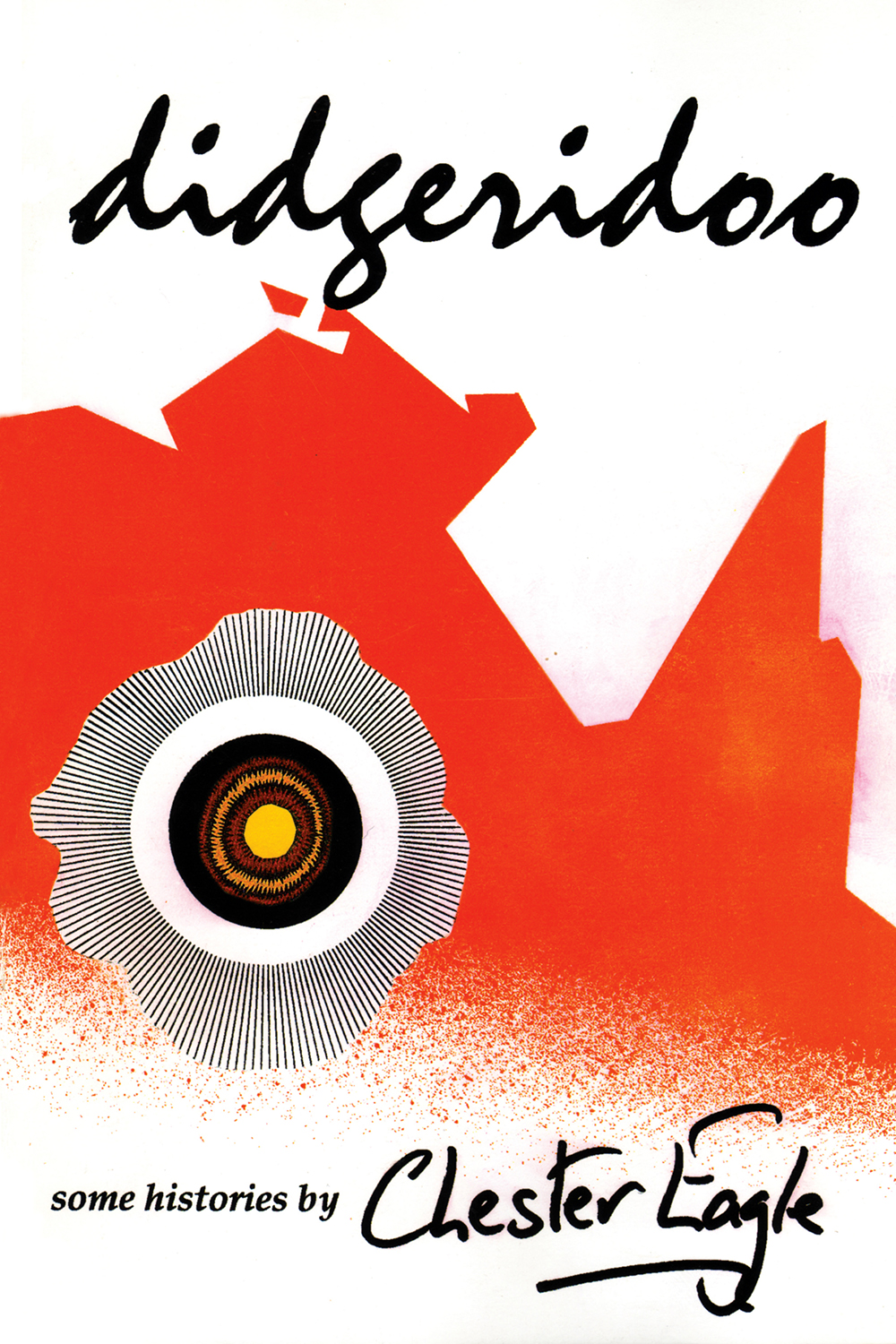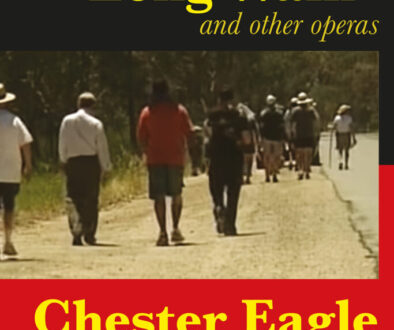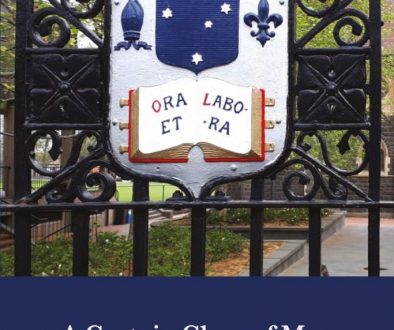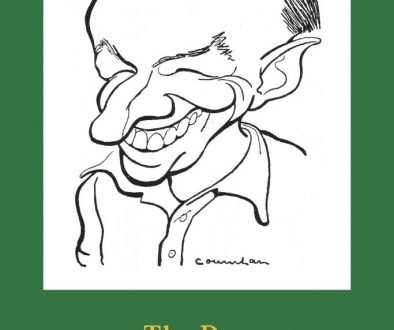didgeridoo

didgeridoo is a variant of one of the oldest literary forms – a gathering of people, each of whom tells a story. A group makes its way every week to a tutorial where one of them presents a paper. Each has chosen a topic and is in some sense subject to the thing being considered. History is no easier to get in order than a person’s life, and the fourteen characters of this collection are depicted as they try to do both. They have all to choose a passage, written long ago, to illustrate their theme, and the author has a similar challenge, because a passage of music, the art revealing the innermost psyche of a culture, enters every story. Music too is history: thirteen of the pieces are European, and ‘classical’, while the sound of the didgeridoo is a vestige of the past and a reminder that the land, timeless and anonymous, shapes all in its unrelenting way.
Written by Chester Eagle
Designed by Vane Lindesay
Layout by Chris Giacomi
Assistance with the project kindly given by the History Department of the University of Melbourne
First published 1999 by Trojan Press
200 copies printed
Circa 140,700 words
Electronic publication by Trojan Press (2006)
The writing of this book:
I am not sure why I took on such a difficult task as this. I had been reading Boccaccio, and Marguerite of Navarre, and I had been struck by how broadly descriptive of a society a collection of tales could be. There’s not much about a society that doesn’t find its way into its stories. Another influence feeding into this book was the two years (1986 – 1987) I spent assisting in the creation of a History field of study in the curriculum for years 11 & 12 in Victoria, the Australian state where I live. This was an exhaustive and often difficult process, and although, when I retired from education, I felt I had been on the winning side of a range of disputes, I also felt that history was a more complex matter than I had realised. I think that what was happening in 1998, when I decided that history was to be the next subject matter of my writing, was that I trying to merge, or blend, the sorts of thinking which I had developed in my thirty or so years in education with the things which came naturally to me as a writer. I’d struggled for ever so long to live the two lives, and now that I was leaving one of them – teaching – I was trying to take it forward into the life I would lead in obedience to the other. Writing. I had always tried to live by the principles of writing, but had had to squeeze it/them in with so much else. I was free at last, and this book, complex as it is, was the shout I wanted to give the world.
Complex. When I look back at the notes I developed in the early months of 1998, when this book was shaping itself, I am surprised. I began … if anything has a definite beginning … by taking my problem to the Caffe Sienna, in Chapel Street, Prahran, one Sunday morning. With a hot chocolate beside me I listed on a piece of paper the fourteen pieces of music that would come into the stories. Fourteen was an arbitrarily chosen number and I should say that I rely heavily, when making formative decisions, on arbitrary decisions that feel right. So fourteen it was. Each story would have a piece of music in it. That shouldn’t be too hard: I listed Carl Nielsen’s 4th Symphony (The Inextinguishable), Claude-Achilles Debussy’s Pelleas et Melisande, Heinrich Schutz, Hector Berlioz, and so on until I had thirteen famous names. Who else?
Then I remembered (it’s in the second last story, ‘Karl’) a moment years before when I’d been watching on TV a test match at the Adelaide oval, and someone in the crowd had started to play a didgeridoo. It was a huge sound, it filled the ground and, I had no doubt, the area surrounding it. This was an expression of our land possessing great force. Looking at the notes I made in the Caffe Sienna that morning (9/3/98) I notice that I say of the didgeridoo at the test match that it was an ‘invasion of an invasion’. So the European music I was going to refer to in my stories (histories?) was a memory of, a borrowing from, the European culture which had imposed itself on our ancient land. It was something we had brought here, so inevitably it would be adapted in some way. Even to think of Bach, Monteverdi, Wagner et al was to underscore the difference of our land from Europe. The spirituality of Europe, and all its other characteristics, had tremendous authority in our new land but were also not quite right, because not home-grown. Thinking about this, it seemed to me that the problems of history which I had had to deal with in my last two years in education were starting to look simple beside the more considerable problems I was opening up for myself.
How to deal with them? The book would be my answer.
I started to shuffle my ideas on the computer. Fourteen stories, therefore fourteen people. Each would have a story of his/her own, and each would present a paper to the tutorial they shared. Each would quote a document of importance to their argument, so that meant I had to find fourteen quotations to incorporate. I started to spend days in the Borchhardt library at Latrobe University, to the north of where I live, and the Baillieu library at the University of Melbourne, another favourite retreat. I love to read in libraries. I started to put stories, people, quotations and musical traces together. Shuffle shuffle. I started to put the fourteen presentations in order. Who’d start? Who’d be last? Eventually I decided that I’d begin with Brigitte, the French woman married to an Australian, and I’d end with Neville, a young man the others thought didn’t amount to much, but who surprised them when his time came. Why Brigitte? Why Neville? I’m a writer before I’m an historian and I felt I could get most effect from these two if I used them to begin and to end.
Other challenges presented themselves. I decided that the music to slip into Angela’s story would be something from Richard Strauss. Der Rosenkavalier? Capriccio? I remembered a performance of the former opera in the Princess Theatre, Melbourne, when the Australian Donald Smith came on for the Italian tenor’s aria which deceives the audience into taking its eye, and mind, away from the Marschallin for a couple of minutes; it’s the trick on which the whole act is constructed. Without this trick, the Marshallin could not be wistful at the end after being lustful at the beginning. On the night I heard Donald Smith he walked to the front of the stage and filled the theatre with such a breathtaking account that nobody could think about anything else. The trick was perfectly performed. Well, I told myself, if you’re going to refer to that music you have to use it to pull the same trick. (See ‘Angela’.)
Suddenly I could see all sorts of games that might be played. Ti Chai, the Chinese student, has to cope with a marvellous slab of Wagner, which she can hardly understand, breaking into her life. My character Sam, wanting to kill himself, mysteriously turns on the car radio to hear Carl Nielsen’s music saying very forcefully that life will persist one way or another, whatever foolish mankind does by way of self-destruction. And into the inelegant world of prostitutes and pimps Wolfgang Amadeus Mozart finds a way, and the world shows all over again how amazing it can be.
When it was time to start, I began all fourteen stories at more or less the same time, advancing them a little at a time, to see if there were any problems I hadn’t foreseen, and to make sure that I didn’t have any clumsy overlaps that needed to be eliminated. After a few weeks of moving slowly I found Danny getting ahead of the others and asking to be finished, followed by Sam, Lou, Neville and so on. The whole book took about a year and I loved every moment of it.
I should record here my thanks to the History Department of the University of Melbourne. Stuart McIntyre and Peter McPhee made it possible for me to sit in on three tutorials conducted by Nick Vlahogiannis, soaking up their atmosphere – what was said and not said, their courtesies, silences, periods of rumination, the sorts of things that came out when people were exchanging thoughts. I collected addresses and sent copies of the book to Nick’s students, when the book was printed, but got only one reply – from the mother of one young woman who had gone overseas and asked her mother to send things on to her. Her mother opened the parcel to find the book and she, at least, found it interesting!



